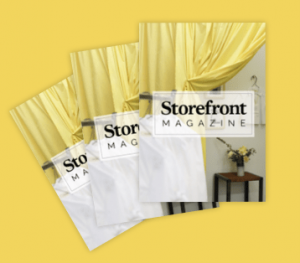Storefront Pressroom
Press Release
Tuesday, June 4, 2019
New market study shows pop-up’s influential role in the retail renaissance
Temporary storefronts are growing in popularity to enhance brand awareness and expand customer engagement, according to University of South Carolina research
—
Temporary storefronts are growing in popularity to enhance brand awareness and expand customer engagement, according to University of South Carolina research
Columbia, SC— June 5, 2019 — A recent survey of 600 retail organizations conducted by The Department of Retailing at the University of South Carolina, and Storefront, the leading marketplace for short term commercial rental space, reveals that the concept of temporary – or pop-up – stores is becoming an increasingly important strategy in how brands promote and sell their products and services, and build long-term relationships with their customers. More than 80 percent of the respondents who had done at least one pop-up indicated the activation was a success, and 58 percent said they would be likely to do another one.
The results of the survey reveal that most online, brick-and-mortar and hybrid retail organizations agree that the main reasons to implement a pop-up are not necessarily around a short-term increase in sales. Instead, retailers are looking at pop-ups as a means to create connections with current and potential customers, to increase brand awareness, to introduce a new product or brand to the marketplace, and to ‘stage’ a new product or brand.
While an increase in sales wasn’t a top reason to do a pop-up, it was still considered an important result, finishing just behind “improve market visibility” which was cited by slightly more than half of the respondents as the most important result. Other branding and awareness metrics such as social media engagement, web site traffic and press coverage also ranked highly as both reasons to do a pop-up and measure results confirming a pop-up’s success.
“Our survey found that pop-ups are largely being used by brands to engage with customers and create visibility in ways not possible through other channels. The retail renaissance is all about the customer experience,” said Mark Rosenbaum, Principle Investigator, Department of Retailing Chair and Professor at the University of South Carolina. “Pop-ups are no longer about one-off promotions, sample sales or selling off excess inventory; they are about creating customer communities, instant and measurable buzz, and personalized experiences that require a physical presence.”
More flexibility and less risk
Karen Edwards, Attorney, Retail Instructor, and Co-Investigator of the study believes that pop-up operations present retailers with an opportunity for more flexibility and less risk than long-term commercial leases. Edwards states, “Pop-up models also enable retailers to initiate brick-and-mortar selling without the need to engage in excessive purchasing and maintaining hefty inventories, as well as be more efficient with other resources, including staffing. The cost-benefit ratio regarding pop-ups is significant, even for digital native brands.”
“The survey reinforces what we are hearing from our clients every day: Pop-ups give brands a flexible way to engage with the customers in creative ways, and at the same time increase their visibility in the marketplace,” said Stephanie, Kidder, CMO at Storefront.
A presentation of the results from the survey can be seen here.
###
For more information, press only:
Dr. Mark S. Rosenbaum & Karen Edwards,
University of South Carolina, Department of Retailing
630.414.6989
Nicholas Moore
Head of Marketing, Storefront

Storefront newsletter
Subscribe to our newsletter and stay up-to-date on the latest trends in venues and get industry-specific tips on making your pop-up project a genuine success.
